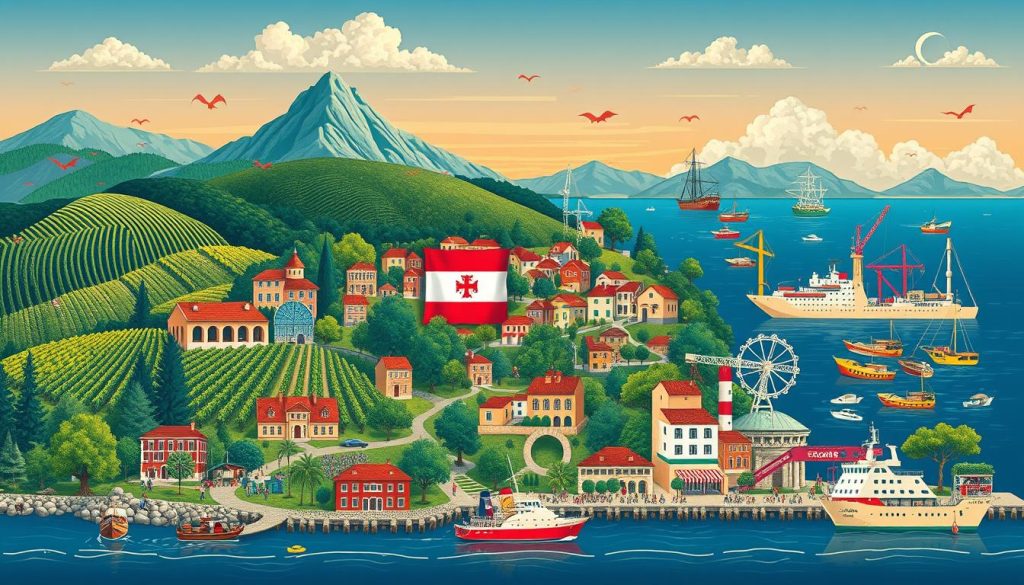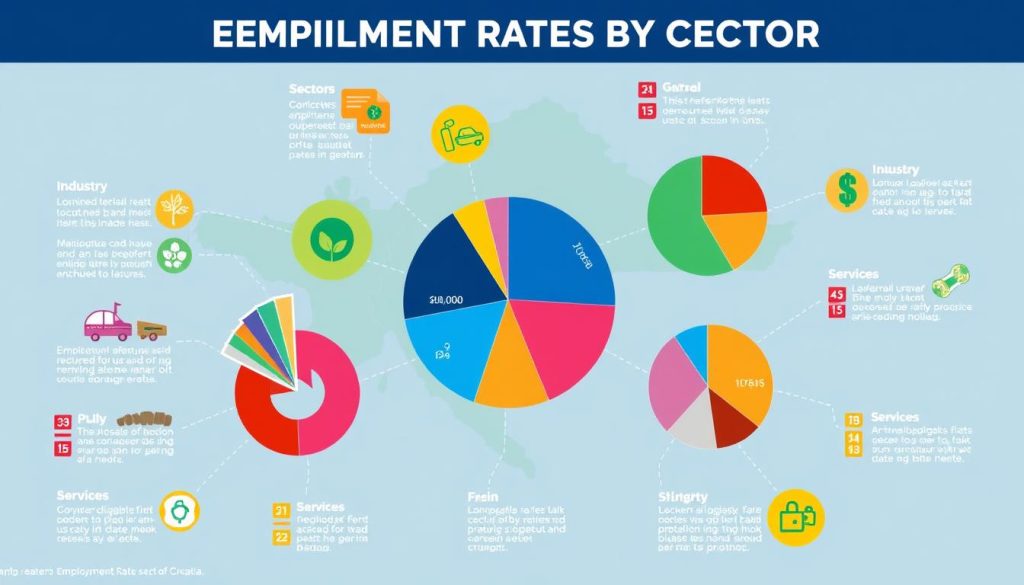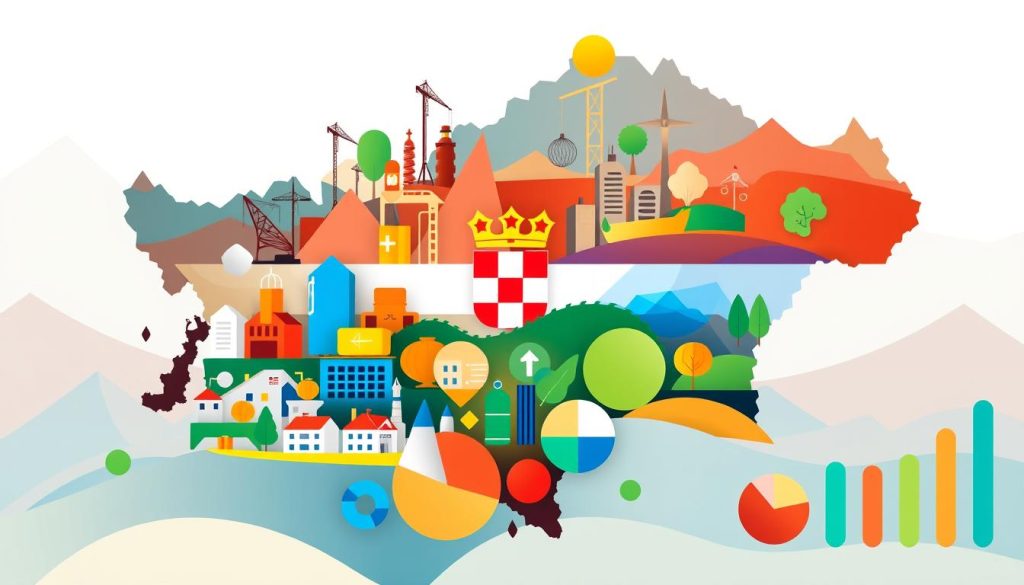Understanding Structural Business Statistics (SBS) is key to grasping Croatia’s economic scene. SBS gives us vital insights into how businesses perform and what they do. This is especially important as Croatia works with the European Union.
SBS helps us see how wealth is made, investments are done, and jobs are created. It uses data from the NACE classification. This data helps policymakers make better decisions. It shows us how the economy is doing and helps us understand changes in value added.
Understanding Structural Business Statistics
Structural business statistics gather data to understand economic activities and business structures across different areas. This data helps us see important economic signs like employment, productivity, and how businesses start. It’s crucial for making smart decisions at both government and business levels.
Definition and Importance
The role of SBS is clear in helping make better choices. It collects data on business activities to spot trends and changes in the economy. This information helps leaders and policymakers adjust their plans to fit the current economic situation.
Comparison with Other Regions
Looking at how different parts of the EU do in business statistics is interesting. For example, Croatia’s business scene is shaped by its industries and the big role of small and medium-sized enterprises (SMEs). By studying this data, we see how Croatia fits into European trends but also faces its own challenges and chances.
Structural Business Statistics in Croatia
The business economy in Croatia is diverse, with many economic activities driving growth. Small and medium-sized enterprises (SMEs) are key, as they innovate and create jobs.
Key Economic Activities
In 2023, Croatia had 240,620 active businesses. These businesses employed about 1,300,996 people, showing the health of various sectors. Here are some key economic activities in Croatia:
- The services sector makes up about 70% of the total turnover, worth €153.5 billion.
- Professional, scientific, and technical activities have the most businesses, with 40,293 active ones.
- Manufacturing has 276,359 workers and a turnover of €31.4 billion, making up 20.4% of the total.
- Wholesale and retail trade are also big, with 34.8% (€53.5 billion) of the total turnover.
The Role of SMEs
SMEs in Croatia are 99.8% of all businesses, crucial for jobs and the economy’s dynamism. In 2022, they made up 50.2% of the total value added. With 80% being micro-enterprises, they are vital for employment and competition.
The data from NACE sections shows the importance of sector variety for economic stability. The 1.8% increase in active businesses shows SMEs’ growth and resilience. These statistics help us understand how sectors work together in Croatia’s economy.

Employment and Value Added by Sector
Looking at the Croatian economy, we see how sectors perform in 2022. This helps us understand the economy’s health. It shows us the key areas to focus on for growth.
Sector Analysis for 2022
Our economy in Croatia has about 1.7 million people working. The manufacturing sector stands out, adding €2.420 billion to the economy. The distributive trades also play a big role, with 30 million people working and adding €1.591 billion.
The economic analysis for 2022 shows how jobs and productivity are linked. For example, the administrative and support services sector is big, with 13.6 million people in the EU working there. It also adds a lot of value to the economy.
- Manufacturing sector’s contributions: €2.420 billion value added.
- Distributive trades: 30 million individuals employed, €1.591 billion contributed.
- Public services also showed an increasing trend in employment rates by sector.
Labour productivity varies by sector. Looking at costs and productivity helps us see who’s doing well. To stay ahead, we need to use our workforce wisely and improve skills.

Trends in Enterprise Birth and Death Rates
In recent years, Croatia has seen big changes in how businesses start and end. The number of new businesses has changed a lot, especially in 2021. This year, the EU saw an average of 10.70% new businesses starting.
This shows how lively new businesses are. It also shows the ups and downs businesses face in a changing world.
Birth Rates in Croatia
Starting new businesses is key to growing the economy. Companies that grow fast and hire more people lead in innovation. These companies are important for the economy, especially in tech and creative fields.
They help the local economy and make Croatia more competitive globally.
Understanding Enterprise Death Rates
It’s also important to look at why businesses close down. Looking into this shows us the challenges businesses face. These include tough competition and operational problems.
By tackling these issues, we can help new businesses thrive. This helps keep Croatia’s business scene stable.

